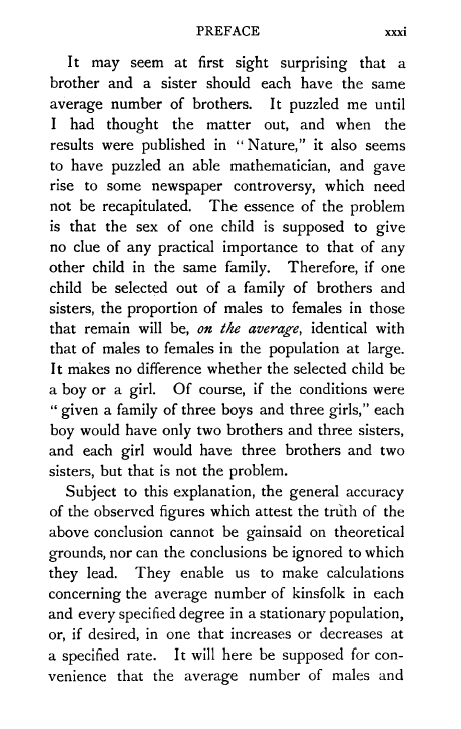PREFACE xxxi
It may seem at first sight surprising that a brother and a sister should each have the same average number of brothers. It puzzled me until I had thought the matter out, and when the results were published in "Nature," it also seems to have puzzled an able mathematician, and gave rise to some newspaper controversy, which need not be recapitulated. The essence of the problem is that the sex of one child is supposed to give no clue of any practical importance to that of any other child in the same family. Therefore, if one child be selected out of a family of brothers and sisters, the proportion of males to females in those that remain will be, on the average, identical with that of males to females in the population at large. It makes no difference whether the selected child be a boy or a girl. Of course, if the conditions were " given a family of three boys and three girls," each boy would have only two brothers and three sisters, and each girl would have three brothers and two sisters, but that is not the problem.
Subject to this explanation, the general accuracy of the observed figures which attest the truth of the above conclusion cannot be gainsaid on theoretical grounds, nor can the conclusions be ignored to which they lead. They enable us to make calculations concerning the average number of kinsfolk in each and every specified degree in a stationary population, or, if desired, in one that increases or decreases at a specified rate. I t will here be supposed for convenience that the average number of males and

